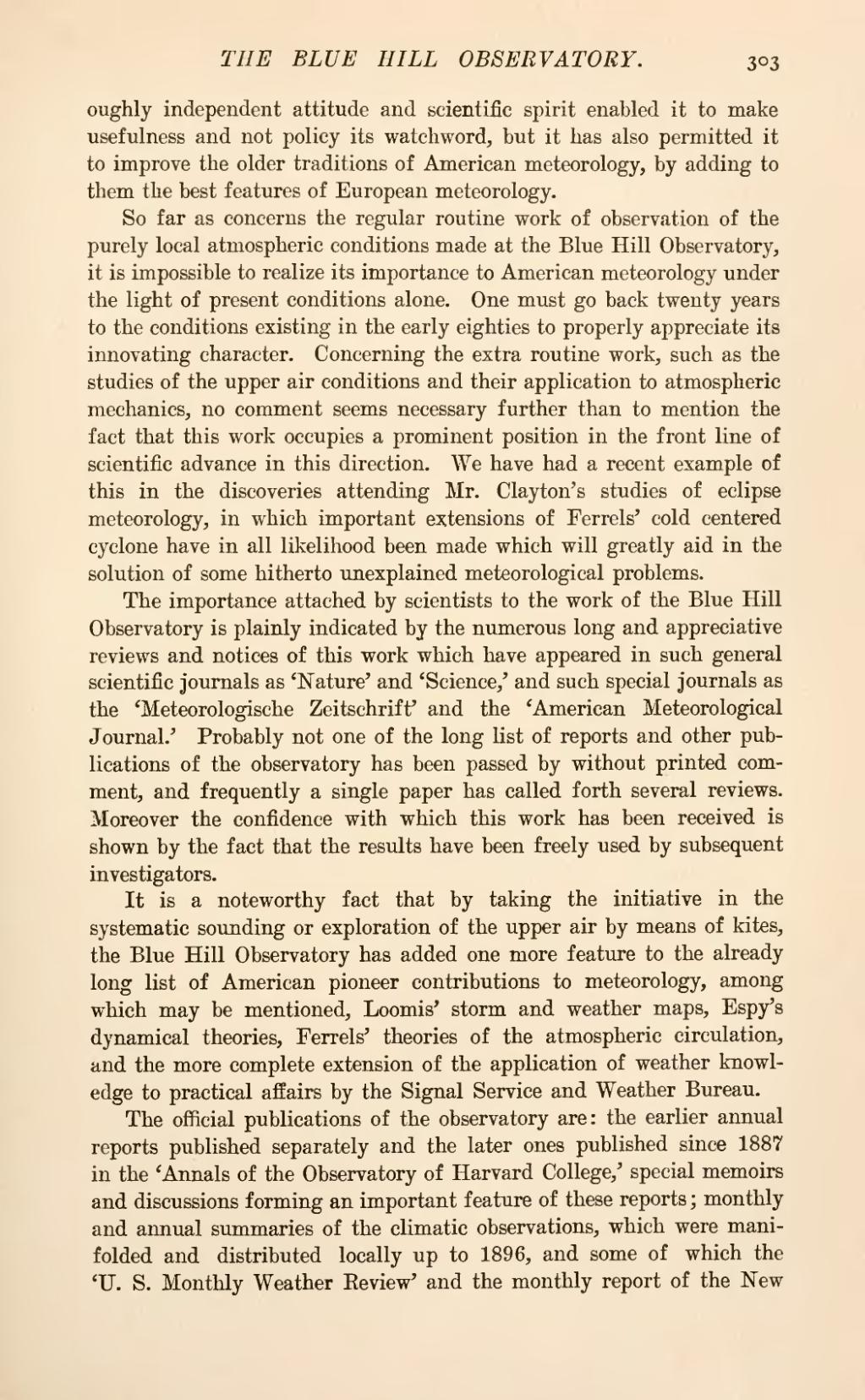oughly independent attitude and scientific spirit enabled it to make usefulness and not policy its watchword, but it has also permitted it to improve the older traditions of American meteorology, by adding to them the best features of European meteorology.
So far as concerns the regular routine work of observation of the purely local atmospheric conditions made at the Blue Hill Observatory, it is impossible to realize its importance to American meteorology under the light of present conditions alone. One must go back twenty years to the conditions existing in the early eighties to properly appreciate its innovating character. Concerning the extra routine work, such as the studies of the upper air conditions and their application to atmospheric mechanics, no comment seems necessary further than to mention the fact that this work occupies a prominent position in the front line of scientific advance in this direction. We have had a recent example of this in the discoveries attending Mr. Clayton's studies of eclipse meteorology, in which important extensions of Ferrels' cold centered cyclone have in all likelihood been made which will greatly aid in the solution of some hitherto unexplained meteorological problems.
The importance attached by scientists to the work of the Blue Hill Observatory is plainly indicated by the numerous long and appreciative reviews and notices of this work which have appeared in such general scientific journals as 'Nature' and 'Science,' and such special journals as the 'Meteorologische Zeitschrift' and the 'American Meteorological Journal.' Probably not one of the long list of reports and other publications of the observatory has been passed by without printed comment, and frequently a single paper has called forth several reviews. Moreover the confidence with which this work has been received is shown by the fact that the results have been freely used by subsequent investigators.
It is a noteworthy fact that by taking the initiative in the systematic sounding or exploration of the upper air by means of kites, the Blue Hill Observatory has added one more feature to the already long list of American pioneer contributions to meteorology, among which may be mentioned, Loomis' storm and weather maps, Espy's dynamical theories, Ferrels' theories of the atmospheric circulation, and the more complete extension of the application of weather knowledge to practical affairs by the Signal Service and Weather Bureau.
The official publications of the observatory are: the earlier annual reports published separately and the later ones published since 1887 in the 'Annals of the Observatory of Harvard College,' special memoirs and discussions forming an important feature of these reports; monthly and annual summaries of the climatic observations, which were manifolded and distributed locally up to 1896, and some of which the 'U. S. Monthly Weather Review' and the monthly report of the New
